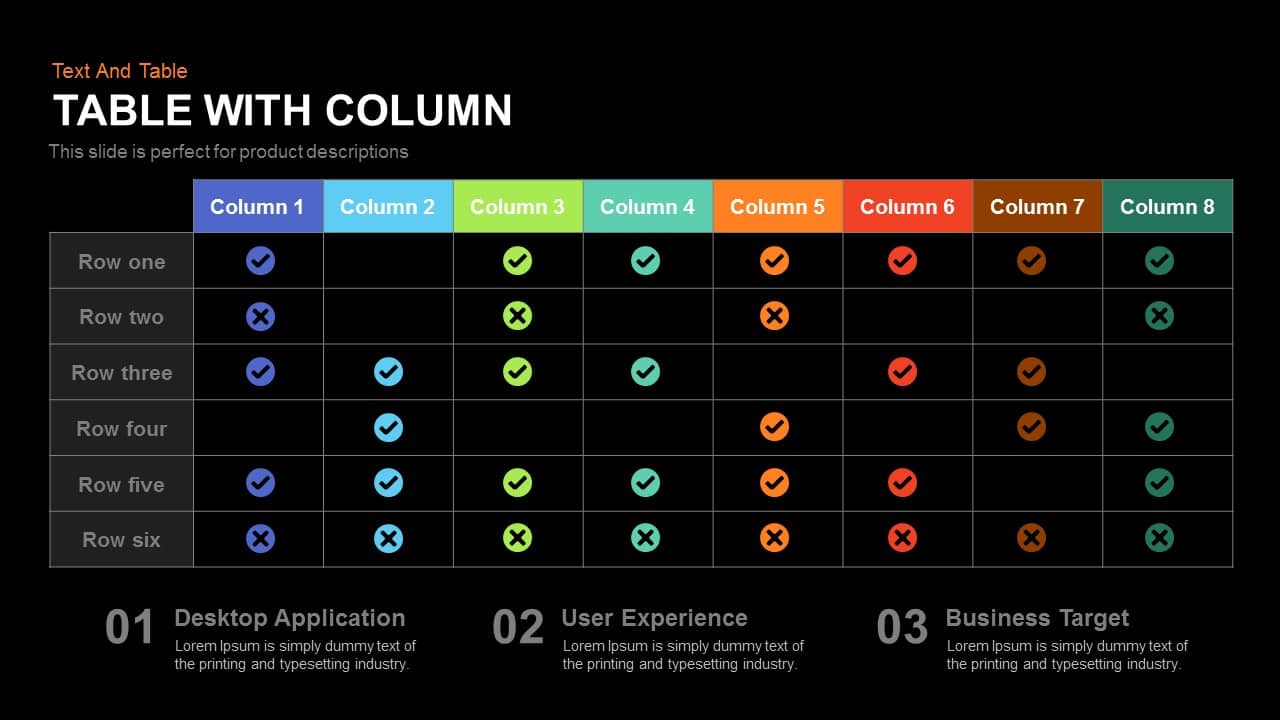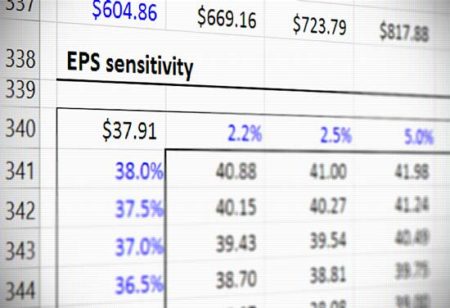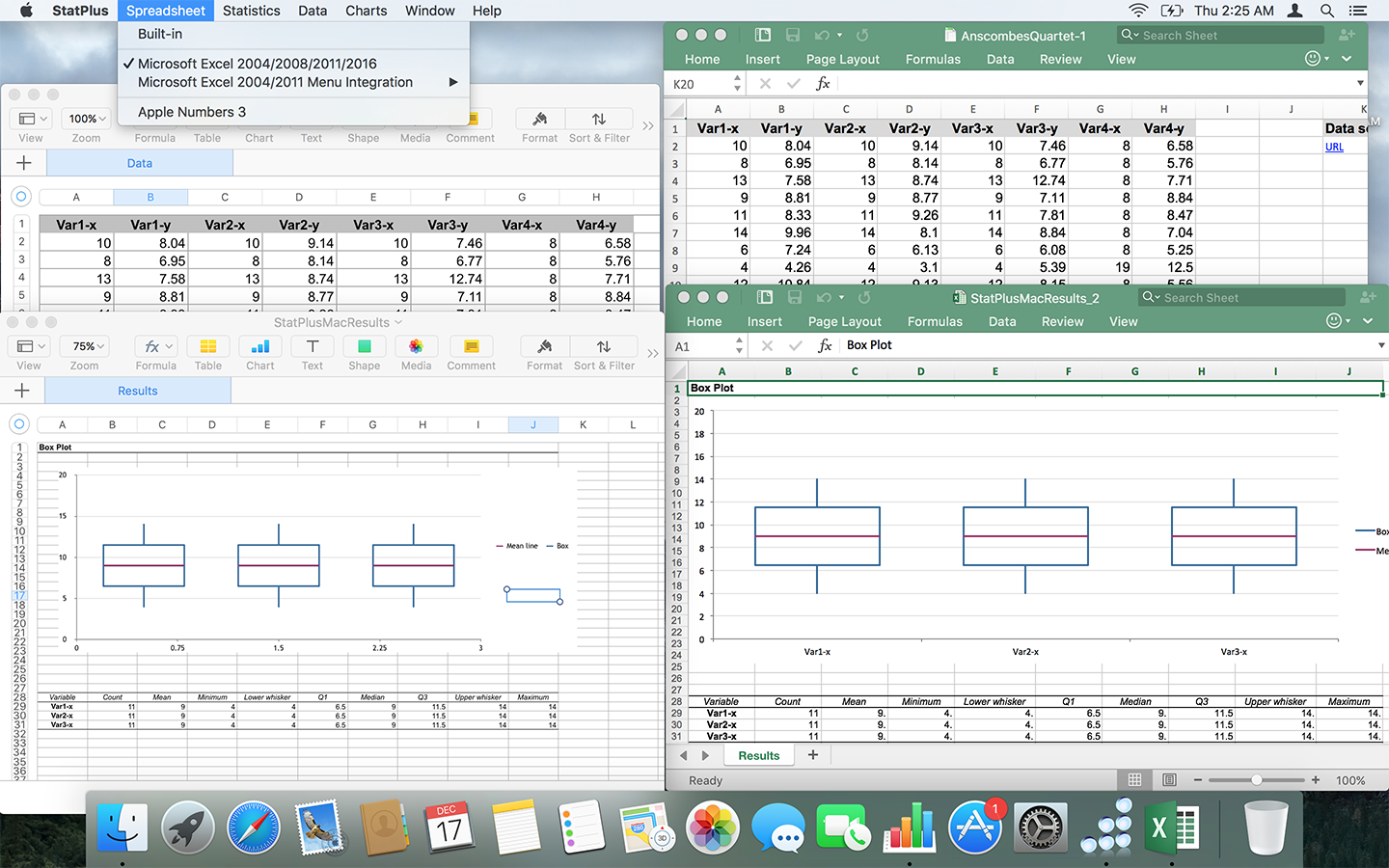Click Tools - Select Add-Ins. Click to select the check box for Solver.Xlam. The Data Analysis Toolpak was removed in Mac:Office for Mac 2008. However, you can download a free third-party tool that offers similar functionality: StatPlus:mac LE. Solution: Download StatPlus:mac LE for free from AnalystSoft, and then use StatPlus:mac LE with Excel 2011. That last link used to include loads of comments from disgruntled Office for Mac users, but Microsoft seems to have removed comment functionality from that help center article. I’ve used XLMiner with Google Sheets to run regressions - its a free add on that has lots of stats power. You can also use Parabola to do stats modeling and data transformation/ETL. Creating Frequency Distributions and Histograms in Excel 2011 Instructions for Mac Users Frequency Distributions 1. Create a new spreadsheet with the numeric variable you want to make a frequency distribution for. Sort the variable ascending by going to Data! Sort and selecting the appropriate column.


The Analysis Toolpak offers data analysis tools for statistical and engineering analysis. It provides advanced tools such as Anova, Correlation, Covariance, Fourier Analysis, Histogram, Regression, t-test and z-test.
Figure 1. Data Analysis tools
This articles assists all levels of Excel users on how to load the Data Analysis Toolpak in Excel Mac.
Where is Data Analysis in Mac
The Data Analysis tools can be accessed in the Data tab.

Figure 2. Data Analysis in menu options
When we can’t find the Data Analysis button in the toolbar, we must first load the Analysis Toolpak in Mac.
How to load the Analysis Toolpak?
When we’re using Excel for Mac, we load the Analysis Toolpak through these steps:
- In the Tools tab, select Excel Add-Ins
Excel Data Analysis Tool Mac
Figure 3. Excel Add-Ins option in menu
How To Get Data Analysis In Excel For Mac 2011
- In the Add-ins window, select Analysis Toolpakand click OK.
Figure 4. Add-ins window
We have successfully loaded the Analysis Toolpak. Click the Data tab > Data Analysis command to see that the Data Analysis tools are now activated.
Figure 5. Output: Load the Analysis Toolpak in Mac
Note:

If the Analysis Toolpakis not available in the list of Add-Ins, click Browse to find it. If it needs to be installed on the computer, click Yes to download and install.
Instant Connection to an Excel Expert
Most of the time, the problem you will need to solve will be more complex than a simple application of a formula or function. If you want to save hours of research and frustration, try our liveExcelchat service! Our Excel Experts are available 24/7 to answer any Excel question you may have. We guarantee a connection within 30 seconds and a customized solution within 20 minutes.
When you’re working in Excel for Mac 2011, you have your choice of two views: Page Layout view and Normal view. Whether you prefer to work in Page Layout view or Normal view, most interface components are the same in both views.
Workbook: Each filename in Excel is the title of its corresponding workbook. Each workbook contains at least one worksheet.
Menu bar: This is the topmost set of controls. The menu bar is Mac only. Menus are customizable and programmable via both VBA and AppleScript.
Standard toolbar: The Standard toolbar is at the top part of each document window, along with standard Open, Minimize, and Close buttons. The Standard toolbar is customizable within Excel and roughly equivalent in that respect to the Quick Access Toolbar of Office for Windows.
If you want to do more with the Standard toolbar, it’s also programmable via VBA and AppleScript.
Show/Hide Toolbar: This tablet-shaped button toggles the Standard toolbar’s visibility off and on.
Ribbon: The Ribbon is new to Excel 2011. The Ribbon is tabbed and displays between the Standard toolbar and the Formula bar.
Formula bar: Major changes were made to Formula bar for Excel 2011. Instead of one Formula bar for the entire Excel application, there is now a Formula bar in each workbook’s window. When working with more than one open workbook at a time, pay attention to which window’s Formula bar you’re using. This takes getting used to.
Worksheet: In a standard Excel worksheet, you can enter text and formulas, perform calculations, and store data. Each open worksheet has its own window.
View buttons: Click these buttons to switch between Page Layout view and Normal view.
Sheet tab: Each sheet in a workbook has a name that appears on its tab near the bottom of the window.
At long last, the most requested feature from Windows Excel has come to the Mac — color sheet tabs. To change a sheet tab’s color, right-click the tab and then choose Tab Color from the contextual menu.
+ (Add Sheet): Click the plus sign to add a new, blank standard worksheet to your workbook. You can add as many worksheets as you want until your computer runs out of memory.
Range tool: Also known as the name box, this tool allows you to name a range of cells in a worksheet.
Toolbox: Click the Toolbox button on the Standard toolbar to display the Toolbox.
Media browser: Click the Media button on the Standard toolbar to display the Media browser.
Rows: Excel has 1,048,576 rows on each worksheet. Row numbers display at the left side of a worksheet. When used as a database, each row with data is a record.
Columns: Excel offers 16,384 columns in a worksheet. Column letters display at the top edge of the worksheet.
Cells: A worksheet in Excel has 17,179,869,184 cells.
Download Data Analysis Excel Mac
If you find you’re pushing Excel’s limits and want to know exactly what they are, search Excel’s Help for the “Specifications and Limits for Excel” topic. You can find such information as how many characters fit into one cell and how many nested levels you can have in a function.
Microsoft Excel For Data Analysis
Like other Office applications, you can find context-sensitive menus just about everywhere you right-click in Excel.

